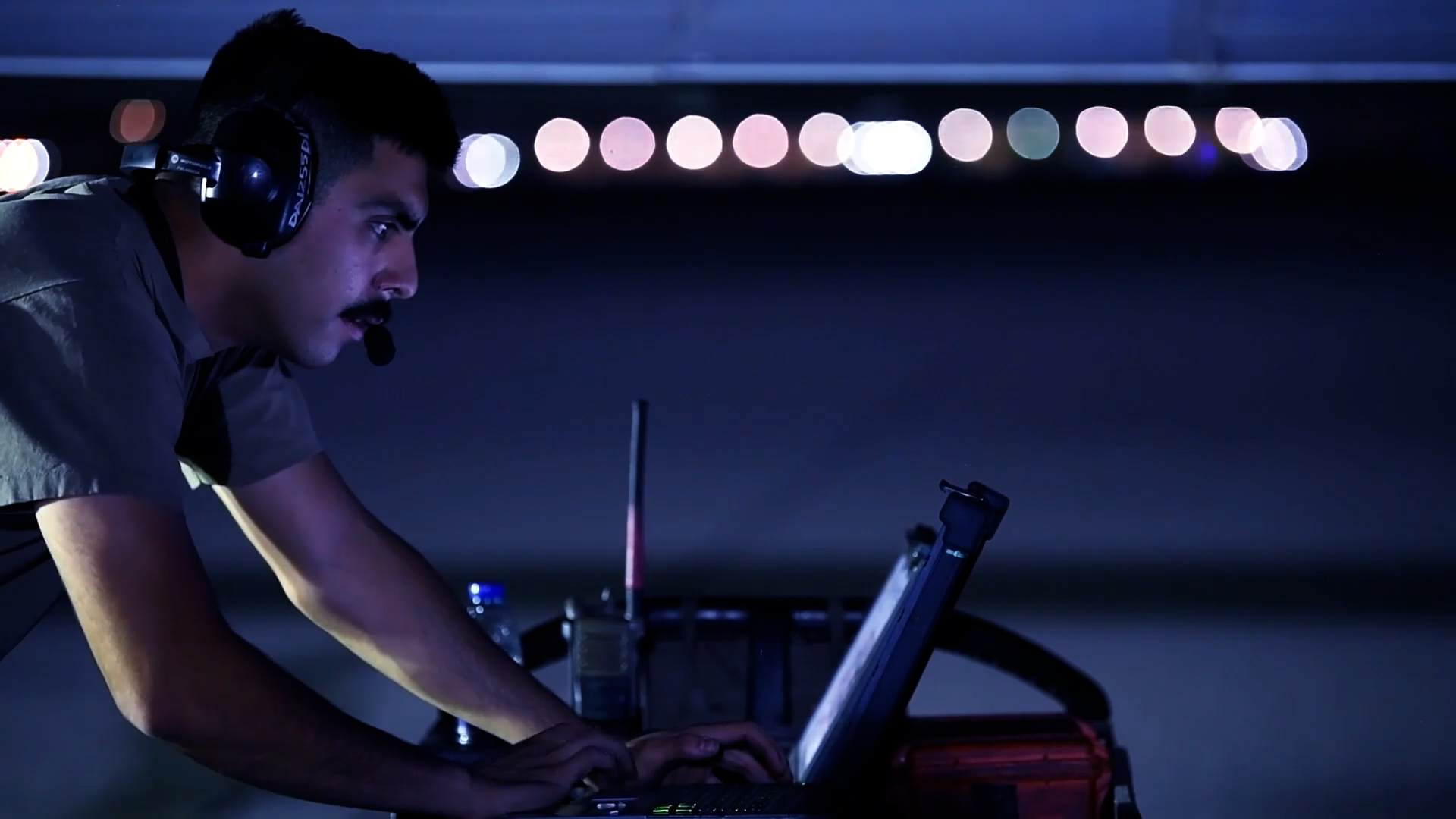
[RYAN ROBERTSON]
ARTIFICIAL INTELLIGENCE IS QUICKLY BEING INTEGRATED INTO MANY ASPECTS OF OUR LIVES FROM NAVIGATION APPS ON OUR PHONES TO THE WORD DOCUMENTS ON OUR COMPUTERS. AI FUNCTIONALITY IS ALSO REACHING U.S. WARFIGHTING TECHNOLOGIES.
FIRST REPORTED BY BLOOMBERG — DURING THE WAVE OF FIREPOWER THE US UNLEASHED IN EARLY FEBRUARY AGAINST SEVEN FACILITIES IN IRAQ AND SYRIA…THE MILITARY UTILIZED AI TO HELP IDENTIFY TARGETS. THERE WERE MORE THAN 85 STRIKES AND ALL HIT IN A SINGLE DAY.
U-S BOMBERS TARGETED EVERYTHING FROM COMMAND AND CONTROL CENTERS TO WEAPONS CACHES, AIMING TO CRIPPLE IRAN’S ISLAMIC REVOLUTIONARY GUARDS CORPS AND OTHER “IRANIAN-BACKED MILITIAS” IN THE REGION
THE MACHINE LEARNING ALGORITHMS WERE CREATED AS PART OF “PROJECT MAVEN” — A FORMER COLLABORATION BETWEEN GOOGLE AND THE PENTAGON.
U.S. FORCES HAVE BEEN USING THIS TECH TO IMPROVE INTELLIGENCE GATHERING FROM DRONES AND SATELLITE IMAGERY TO IDENTIFY TARGETS IN THE MIDDLE EAST. THEY’VE TESTED ITS CAPABILITIES IN EXERCISES OVER THE LAST YEAR.
SCHUYLER MOORE
CHIEF TECHNOLOGY OFFICER | U.S. CENTRAL COMMAND
“How could it identify what a one-way UAS looks like if it’s never seen an Iranian one-way UAS? These are the types of live data and scenario-specific data that we can raise the flag on early and say, “hey, this is going to matter a lot for the performance of what you’re handing to us.”
[RYAN ROBERTSON]
MOORE EMPHASIZED SOLDIERS CONSTANTLY REVIEWED AND VERIFIED THE TARGET RECOMMENDATIONS MADE BY AI SYSTEMS. ADDITIONALLY, SOLDIERS WERE RESPONSIBLE FOR PLANNING THE ATTACKS AND SELECTING THE APPROPRIATE WEAPONRY.
BY UTILIZING COMPUTER VISION ALGORITHMS, FORCES CAN NOW IDENTIFY ENEMY LOCATIONS AND ASSETS WITH REMARKABLE ACCURACY. REMEMBER MORE THAN 85 TARGETS WERE IDENTIFIED AND DESTROYED IN JUST ONE DAY. THIS TYPE OF EFFICIENCY STREAMLINES THE DECISION-MAKING PROCESS AND MAKES IT EASIER TO DECIDE WHICH RESOURCES TO DEPLOY GIVEN THE SITUATION ON THE BATTLEFIELD.
SCHUYLER MOORE
CHIEF TECHNOLOGY OFFICER | U.S. CENTRAL COMMAND
“Software-centric warfighting completely changes the way that we need to think about policy. And I think that we’re in the middle. We are not towards the end. We are closer to the beginning.”
THERE WILL BE MUCH MORE USE OF A-I IN AMERICA’S FUTURE FIGHTING FORCE. MOST EVERY SERVICE BRANCH STRUGGLED RECENTLY TO HIT RECRUITING NUMBERS–AND ARTIFICIAL INTELLIGENCE COULD HELP FILL THAT DEFICIT.
ALSO, MANY OF THE HIGHLY ADVANCED WEAPONS COMING TO MARKET IN THE NEXT FEW YEARS MAKE NO SECRETS ABOUT EMPLOYING AI IN MANY MISSION CRITICAL SYSTEMS.







